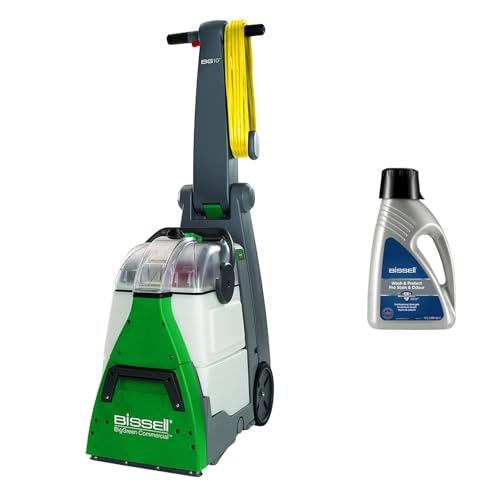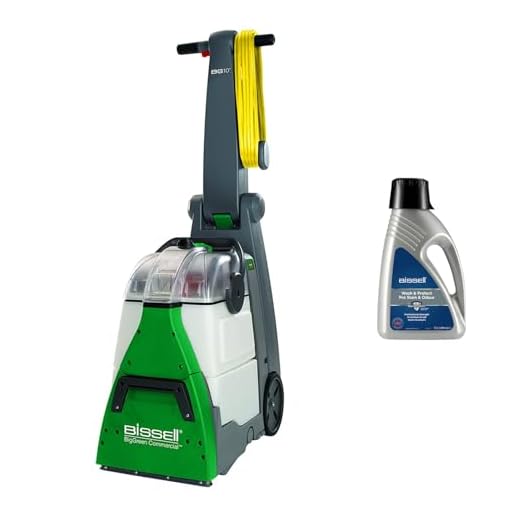




If you notice a lingering, unpleasant odour in your living space, the first step is a thorough inspection of carpets, upholstery, and any area where your pet frequently resides. Canine accidents, particularly if not cleaned promptly, can leave behind stubborn residues that emit foul scents.
Utilising enzymatic cleaners designed specifically for animal waste can significantly improve the situation. These products break down the compounds responsible for the odour, effectively neutralising the source rather than merely masking it. Apply the cleaner according to the instructions, ensuring you allow it adequate time to penetrate the affected area.
Additionally, if the unpleasant scent persists despite thorough cleaning, consider checking for hidden spots that may have been overlooked. Areas under furniture or in corners can sometimes hide stains that contribute to the issue. Regularly inspecting these locations can prevent future problems.
Ventilation plays a key role in maintaining a fresh environment. Open windows and use fans to promote airflow, which can help dissipate any lingering odours. Incorporating air purifiers with HEPA filters can also assist in keeping your space smelling clean.
Lastly, consistent training and supervision of your furry friend can reduce the likelihood of accidents occurring indoors. Establishing a routine for bathroom breaks and rewarding your pet for appropriate behaviour can make a significant difference in maintaining a pleasant atmosphere.
Identifying the Source
Check corners and areas where accidents occur frequently. Look under furniture, behind curtains, and around pet beds. Often, a hidden stain can be the culprit. Use a blacklight to reveal any old spots that may not be visible during regular cleaning.
Cleaning Solutions
Enzymatic cleaners work wonders on biological stains. These products break down the compounds that cause the unpleasant aroma. Apply the cleaner generously, scrub the area, and allow it to dry completely. Avoid using ammonia-based cleaners, as they can exacerbate the issue.
Ventilation
Improve airflow by opening windows and using fans. Fresh air helps disperse lingering odours. Consider an air purifier equipped with a HEPA filter to capture and eliminate pet-related scents. Regularly change HVAC filters to maintain a clean atmosphere.
Regular Maintenance
Establish a cleaning routine that includes vacuuming carpets and upholstery. Use a steam cleaner on carpets to extract deep-seated residues. Wash pet bedding frequently to prevent any build-up of odour-causing elements.
Behavioural Adjustments
Train pets to eliminate outside or in designated areas. Positive reinforcement techniques can help establish good habits. Consistency is key; consider using pee pads for indoor training if necessary. Monitor water intake to help manage bathroom habits.
Professional Help
If the situation persists, consult a professional cleaning service specialising in pet odour removal. They have tools and expertise to tackle tough stains and scents effectively.
Identifying the Source of the Odour
Begin your search in areas where your furry companion spends most of their time. Focus on the following spots:
- Flooring: Check carpets, rugs, and wooden floors. Look for discolouration or dampness.
- Furniture: Examine sofas and chairs where your pet lounges. Upholstery can absorb unpleasant scents.
- Bedding: Inspect your pet’s sleeping area. Wash or replace bedding that retains odours.
- Walls and Baseboards: Look for stains or marks, particularly at height levels your pet can reach.
- Hidden Corners: Explore less obvious places, like behind furniture or inside closets.
For a more thorough investigation, consider these methods:
- Utilise a blacklight to reveal any hidden urine stains that might be invisible to the naked eye.
- Perform a sniff test in various rooms, moving methodically to pinpoint the strongest areas.
- Enlist a friend for a second opinion; sometimes a fresh nose can identify what you might have missed.
Once you’ve located the offending area, take note of the surface and surrounding environment. This will help you choose the right cleaning products and methods for effective removal.
Common Areas Where Urine Accumulates
The first place to check is the flooring, especially carpets and rugs. These materials easily absorb liquid, making them prime suspects. If any accidents have occurred, the fibres could hold onto odours, even after cleaning.
Another frequent area is near doors or entryways. If your furry friend tends to mark their territory when guests arrive, the surrounding surfaces may have accumulated moisture. Pay close attention to corners and baseboards where they might have sprayed.
Bathrooms are also a hotspot. If your canine companion has a habit of sneaking in, it’s worth inspecting behind the toilet or around the edges of the bath. These spaces can trap remnants that contribute to unwanted scents.
Check furniture, particularly upholstered pieces. Cushions and fabric can absorb any spills, leading to lingering aromas. Lift cushions and examine seams for signs of moisture.
If there’s a specific area in the garden where your pet prefers to relieve themselves, the smell might transfer indoors, especially during rainy weather when the scent is carried inside on shoes or paws.
Lastly, consider the laundry area. If you wash pet bedding or toys at home, any residual moisture from a washing machine can create an environment that encourages unpleasant odours. Ensure everything is thoroughly dried before putting it away.
How to Clean Dog Urine Stains Properly
First, act quickly. Blot the area with paper towels to absorb as much liquid as possible. Press down firmly, but avoid rubbing, as this can spread the stain further.
Mix a solution of one part white vinegar and one part water in a spray bottle. Spray the stained area generously, ensuring it penetrates deep into the fabric or carpet. Let it sit for 5-10 minutes to neutralise the odour.
After the vinegar solution has soaked, blot the area again with clean towels to remove moisture. Follow up with a mix of water and a few drops of dish soap for additional cleaning. Rinse with plain water and blot dry.
If the stain persists, consider using an enzymatic cleaner specifically designed for pet messes. These products break down the proteins in urine that cause lingering smells. Apply according to the manufacturer’s instructions, allowing it to sit for the recommended time.
For carpets, ensure to lift the fibres gently while cleaning to reach any hidden residue. If you’re dealing with hardwood floors, clean up immediately and wipe with a damp cloth. Avoid soaking the wood, as excess moisture can cause damage.
After cleaning, sprinkle baking soda over the area to absorb any remaining odours. Leave it overnight, then vacuum it up the next day. This will help keep the space fresh.
Regularly inspect areas where your furry friend frequents. This helps catch any accidents early, preventing permanent damage and persistent aromas.
Preventing Future Accidents in the Home
Regularly taking your furry friend outside is key. Establish a consistent bathroom schedule, especially after meals, playtime, or naps. Puppies and older dogs may need more frequent trips.
Positive reinforcement works wonders. Reward your pet with treats or praise immediately after they relieve themselves outside. This builds a strong association with outdoor potty breaks.
Consider crate training. Dogs instinctively avoid soiling their sleeping areas. A crate can help them learn bladder control, making it less likely they will have accidents indoors.
Keep an eye on your pet’s behaviour. If they start sniffing around or circling, it could signal they need to go out. Intervening at this stage is crucial to prevent mishaps.
Limit access to specific areas in your living space. Use baby gates or closed doors to keep your companion away from places prone to accidents, especially during training periods.
Invest in odour-neutralising products. While cleaning up messes, using enzymatic cleaners can help eliminate lingering scents that might encourage repeat behaviour in your pet.
Incorporate regular vet visits. Health issues can lead to changes in bathroom habits. A check-up can rule out any underlying medical concerns that might contribute to unwanted indoor incidents.
| Tip | Description |
|---|---|
| Routine | Set a regular schedule for outdoor breaks. |
| Positive Reinforcement | Reward outdoor relief with treats or praise. |
| Crate Training | Teach control by using a crate effectively. |
| Behaviour Monitoring | Watch for signs indicating the need to go out. |
| Access Limitation | Restrict access to areas where accidents are common. |
| Odour Neutralisers | Use enzymatic cleaners to remove scents. |
| Veterinary Check-ups | Ensure health issues are not causing accidents. |
Using Odour Neutralisers and Deodorisers
Choose enzymatic cleaners specifically designed for pet messes. These products break down the compounds in urine, effectively eliminating the source of the unpleasant scent. Apply according to the manufacturer’s instructions for best results.
Types of Odour Neutralisers
- Enzymatic Cleaners: Great for deep cleaning and tackling stubborn stains. Look for products that list specific enzymes that target pet waste.
- Odour Absorbers: Activated charcoal or baking soda can absorb lingering scents. Place bowls of these materials in affected areas for added freshness.
- Air Fresheners: Opt for natural sprays with essential oils. Avoid synthetic fragrances, as they may mask rather than eliminate the problem.
Application Tips
- Test any product on a small, inconspicuous area to ensure it won’t damage your surfaces.
- Thoroughly clean the area before applying the neutraliser for maximum effectiveness.
- Reapply as necessary, especially in high-traffic areas where your pet frequently lingers.
In tandem with these products, maintain regular cleaning routines. Vacuum carpets and upholstery often to remove hair and dander that can contribute to odours. For persistent problems, consider professional cleaning services.
For pet owners facing changes in their companion’s eating habits, check out why does my dog keep going off his food for insights that may also relate to stress or health issues affecting behaviour.
When to Consult a Professional for Help
If persistent odours linger despite thorough cleaning, it’s time to seek expert assistance. A professional can identify hidden sources of contamination that may not be visible to the naked eye. For example, I once struggled with a stubborn scent that lingered even after I scrubbed every corner. It turned out that a small stain had seeped into the carpet padding, requiring specialised extraction equipment to eliminate completely.
Signs Indicating Professional Help is Needed
If attempts to neutralise the aroma prove ineffective, consider consulting a specialist. Indicators include recurring smells after cleaning, a worsening odour over time, or if you notice behavioural changes in your furry companion, such as increased marking. These signs suggest that deeper issues could be at play, necessitating professional evaluation.
Benefits of Professional Assistance
Hiring an expert not only resolves persistent odours but also helps prevent future occurrences. They possess the knowledge and tools to treat areas that are often overlooked. For instance, I learned that the type of flooring and the age of my carpets can significantly affect how odours linger. Professionals can provide tailored solutions that fit your specific situation, ensuring a fresher living environment.










